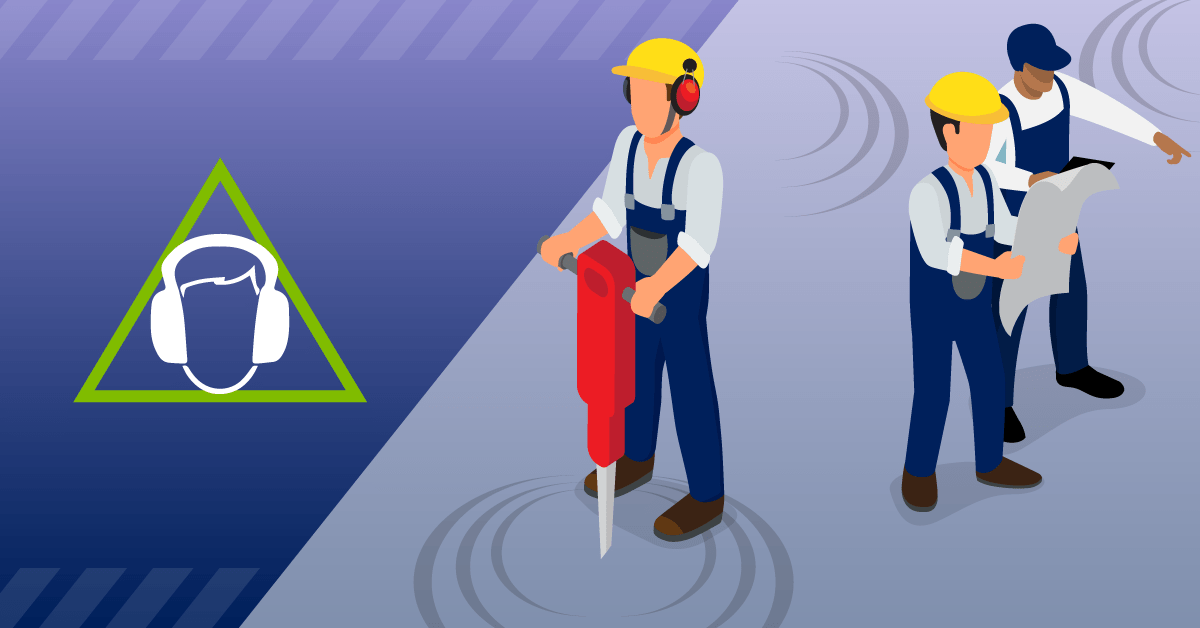An estimated 28-32% of Australians are exposed to hazardous noise in their workplace or work environment. This makes compliance regarding excessive noise essential in the risk management plans of operators in industries where noisy processes or noisy environments are a factor.
Noise hazards can frequently be overlooked or undervalued in terms of their potential danger to workers, including contractors. Noise exposure at harmful levels can result in permanent hearing impairment, contribute to poor productivity, and even accidents where loud or continuous noise may obscure important sounds or signals and impair concentration.
If your business relies on the use of noisy processes, machinery, power tools, or heavy equipment, there are obligations to minimise hazardous noise levels in your workplace.
What makes noise a hazard?
While most people would associate hazards with physical or visible dangers such as machinery or chemicals, there is a less visible threat that can have significant impact on the health and well-being of employees in your workplace.
In essence, sound is vibration that takes the form of an acoustic wave that travels through a medium such as solids, such as wood; liquids, such as water; and gases, such as air. “Noise” specifically refers to sound that is undesired by the listener. This may be due to volume levels, frequency, air pressure, inability to perceive other important sounds, and other physiological impacts. In the workplace, prolonged exposure to harmful noise levels can increase the risk of occupational noise induced hearing loss, as well as enhance distractions and limit lifesaving communication.
What are the risks of noise exposure?
The most apparent risk posed by hazardous noise is hearing loss. Occupational noise induced hearing loss is permanent, but preventable with the correct measures. It is imperceptible in its early stages, making it very difficult to diagnose and treat. Acoustic trauma can lead to loss of hearing over extended periods of time, with the risk increasing in workplaces with large shock noises or high exposure periods.
Hazardous noise levels can also affect your team’s capacity to communicate effectively in high-risk situations or emergencies, where the safety of people relies upon continuous communication or the flagging of immediate risks.
The businesses at most risk of hazardous noise.
Noise-related injuries are most common in sectors that use heavy machinery or are engaged in materials processing such as the manufacturing and construction industries. Those most at risk include technicians and tradespeople, machinery operators, drivers, and labourers. Specific tasks, such as operating loud machinery, using power tools, or working in close proximity to heavy equipment can contribute to increased noise exposure.
High traffic environments and field work in built-up areas can pose risks where noise levels may impede workers’ ability to communicate effectively.
Your obligations to manage hazardous noise risks.
To keep you and people in your workplace safe from harmful noise levels, Australian WHS Regulations say you must:
- Identify noise hazards.
- Conduct noise assessments to ensure that noise does not exceed 140 dB from a single source or 85 dB over an average of 8 hours.
- Use suitable control measures including providing personal protective equipment (PPE).
- Provide audiometric testing for workers who you require to frequently wear personal hearing protection for their work.
Read more about the Australian Noise Model Code of Practice.
In audiometric testing, the tester plays a series of tones, and the listener shows whether they heard them. It is a simple procedure, and you must provide it to your workers who often use personal hearing protectors to protect them from noise exposure:
- Within 3 months of them starting work, and
- At then least every 2 years while employed by you
Familiarise yourself with the hierarchy of control and choose the highest level of control practicable for your business. Eliminating and minimising the source of noise is often the most effective way to prevent occupationally induced hearing loss. Using noise insulated equipment (e.g. suppression devices to silence compressors), enclosing or isolating noisy machinery (e.g. Using a booth to contain or isolate people from noisy processes) and reducing vibration (e.g. dampening) reduces the risk of excessive noise resulting from engineering design. Administrative controls including work practices and policies such as rotation of employees through noisy tasks, limiting duration of exposure to noisy processes, scheduling breaks in quiet areas and establishing quiet zones within the workplace.
While eliminating or minimising noise from its source is the most effective measure, it cannot always be achieved in every circumstance. When other controls are insufficient or genuinely not available, PPE such as earplugs or earmuffs can be used to protect employees from hazardous noise levels.
Managing Hazardous Noise Compliance with Cm3
Cm3 recognises that hazardous noise exposure on worksites has not always been front of mind, with new research and regulations around hazardous noise revealing the dangers of prolonged exposure to those in high-risk industries.
To address these concerns effectively for clients and contractors, Cm3 has launched a newly developed Risk Review that focuses on the assessment of hazardous noise risk management. This will be useful where a contractor’s work may generate hazardous noise, or where the contractor may be working in a noisy environment resulting from the activity of others.
Contractors on Cm3 are now able to complete this risk review and provide assurance to their clients that they are prepared to manage the risks of hazardous noise whilst conducting their work.
Contact Cm3 to learn more today.
